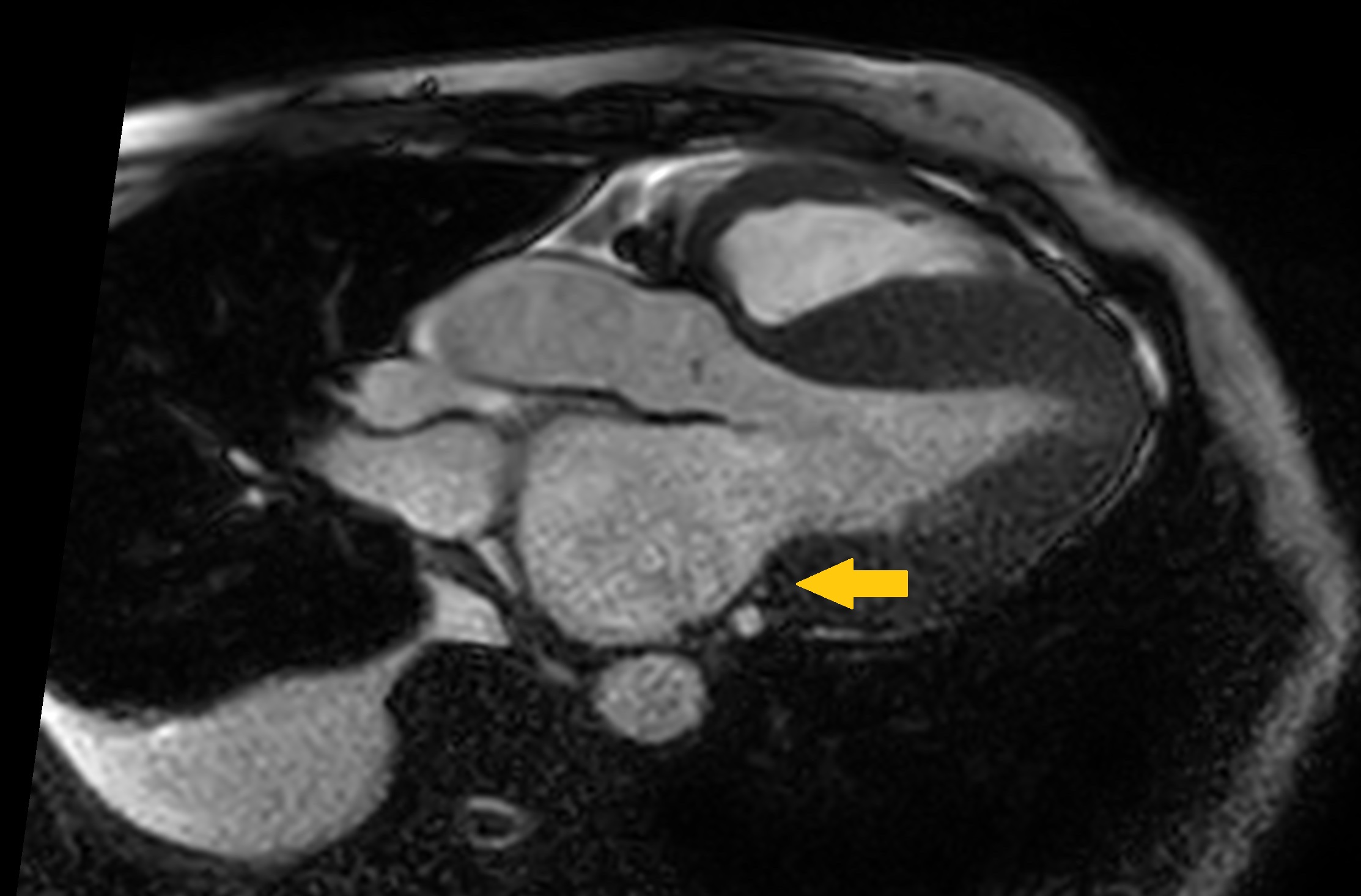Amyloidosis MRI
|
Amyloidosis Microchapters |
|
Diagnosis |
|---|
|
Treatment |
|
Case Studies |
|
Amyloidosis MRI On the Web |
|
American Roentgen Ray Society Images of Amyloidosis MRI |
Editor-In-Chief: C. Michael Gibson, M.S., M.D. [1] Shyam Patel [2]; Associate Editor(s)-in-Chief:
Overview
MRI is commonly done to assess for amyloid deposition in particular organs. It can also be done to rule out other causes of organ dysfunction. However, MRI is more sensitive than CT in the diagnosis of amyloidosis. A cardiac MRI is used when an echocardiogram fails to differentiate amyloidosis from hypertrophic cardiomyopathy.
MRI
In cardiac amyloidosis the MRI findings may include[1]:
- Heart enlargement with heterogeneous decreased attenuation
- Cardiac calcifications
- Pericardial effusion (rare)
In hepatic amyloidosis the MRI scan findings may include:
- Liver enlargement with heterogeneous decreased attenuation
- Asymmetric and triangular hepatomegaly with the apex at the falciform ligament (due to mild atrophic change of the lateral border of both hepatic lobes)
- Parenchyma calcification (rare)
In renal amyloidosis the MRI findings may include:
- Kidney enlargement with heterogeneous decreased attenuation
- Parenchyma calcification (rare)
In amyloidosis involving the peripheral nerves the MRI findings may include:
- Perineural enhancement
Images


References
- ↑ Falk RH, Quarta CC, Dorbala S (2014). "How to image cardiac amyloidosis". Circ Cardiovasc Imaging. 7 (3): 552–62. doi:10.1161/CIRCIMAGING.113.001396. PMC 4118308. PMID 24847009.
- ↑ Case courtesy of Dr David Cuevas, <a href="https://radiopaedia.org/">Radiopaedia.org</a>. From the case <a href="https://radiopaedia.org/cases/61600">rID: 61600</a>
- ↑ Case courtesy of Dr Rebecca Dumont Walter, <a href="https://radiopaedia.org/">Radiopaedia.org</a>. From the case <a href="https://radiopaedia.org/cases/42915">rID: 42915</a>